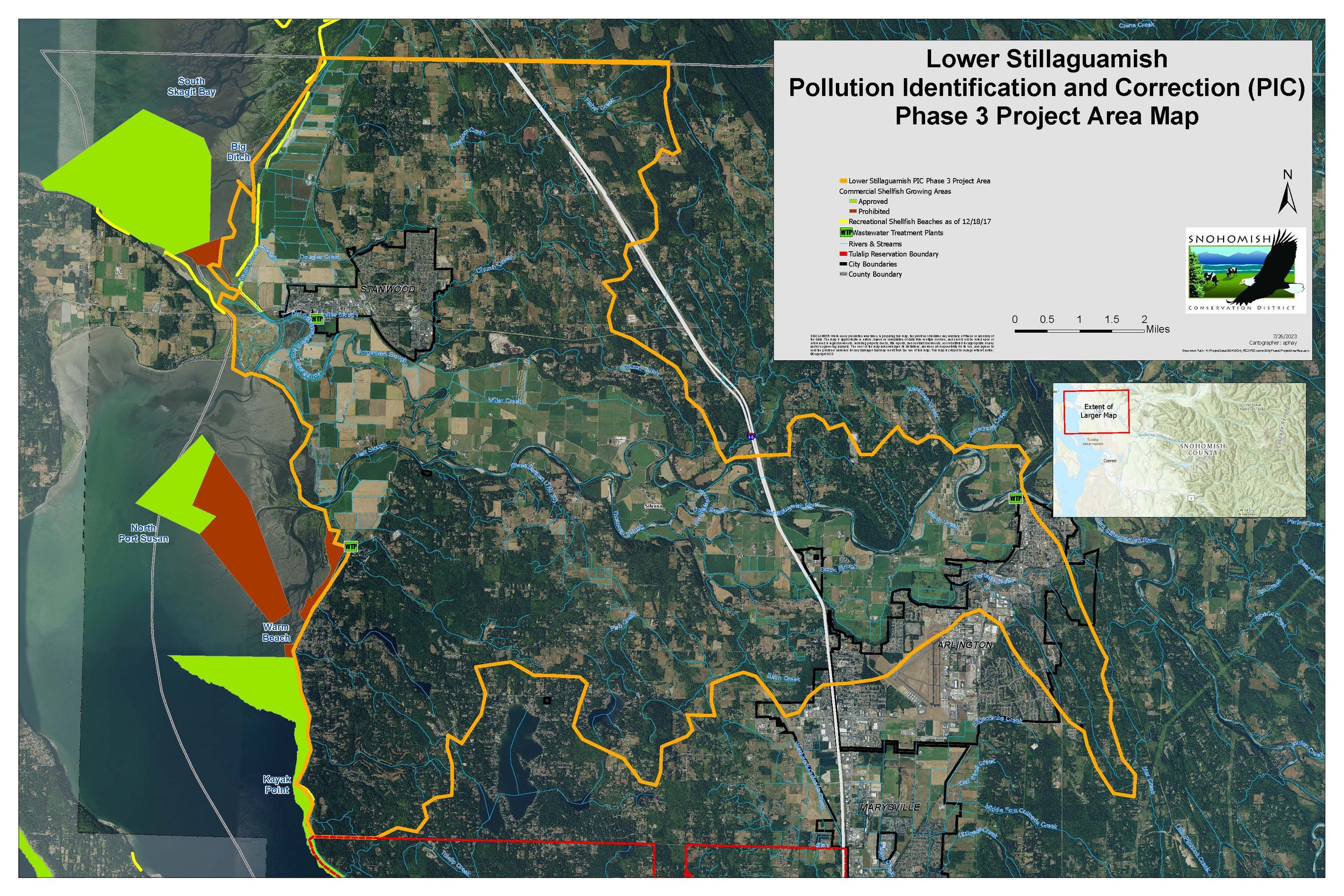Lower Stillaguamish PIC Project - Phase 3
Project area of Phase 3 of the Lower Stillaguamish PIC proejct.
Hundreds of acres of Port Susan Bay shellfish beds were downgraded and closed to harvesting due to the presence of high levels of fecal coliform bacteria. Shellfish beds in South Skagit Bay were also at risk. We have worked to locate and correct sources of fecal bacterial pollution that are contributing to high bacteria counts in these bays.
What we’re doing
Snohomish Conservation District, the Stillaguamish Tribe, Snohomish County Health Department (formerly Snohomish Health District), Snohomish County Surface Water Management, state departments of Ecology, Agriculture, and Health, the Tulalip Tribes and other partners worked together to investigate and correct sources of fecal bacterial pollution from humans (onsite septic systems and duck-hunting cabins) and animals (livestock manure and pet waste).
Located potential sources of fecal bacteria pollution. Water quality testing discovered fecal bacterial pollution across the area from onsite septic systems, dogs, and different kinds of livestock.
Provided educational opportunities for those living in and using the watershed on how to keep human and animal waste out of the waterways.
Provided technical and financial assistance to individuals and farms to correct sources of fecal bacteria pollution.
WHY IS THIS ISSUE IMPORTANT?
High amounts of fecal bacteria in water pose a serious threat to public health. Recreating in and eating shellfish from waters with high fecal counts can increase risk of contracting numerous types of disease. Keeping human and animal waste out of our waterways is vital to having safe rivers and bays for recreating and shellfish harvesting.
clam from port susan
WHAT YOU CAN DO
We all need to do our part to keep fecal matter out of our waters. We can do this by:
Maintaining and repairing septic systems.
Managing livestock manure to prevent it from leaching into the ground or washing into waterways.
Picking up pet waste, bagging it, and putting it in the trash.
Packing out human waste when hiking, fishing, and hunting.
Download a free brochure for more details about the project along with resources to help you maintain or repair your septic system and manage mud and manure on your farm.
Stillaguamish river between stanwood and leque island
ABOUT SNOHOMISH CONSERVATION DISTRICT
Snohomish Conservation District works with thousands of farmers, city residents, rural and suburban landowners on a voluntary basis, providing educational resources, technical expertise, and funding for conservation projects. District boundaries include most of Snohomish County and all of Camano Island.
FOR MORE INFORMATION
Kathryn Wells, Snohomish Conservation District | kathryn@snohomishcd.org | 425-377-7024
Linda Lyshall, Snohomish Conservation District | llyshall@snohomishcd.org | 425-327-9862
This project has been funded wholly or in part by the United States Environmental Protection Agency under Assistance Agreement PC-01J18001 to the Washington State Department of Health. The contents of this document do not necessarily reflect the views and policies of the Environmental Protection Agency, nor does mention of trade names or commercial products constitute endorsement or recommendation for use.
News and Highlights
Partners
Partner logos














